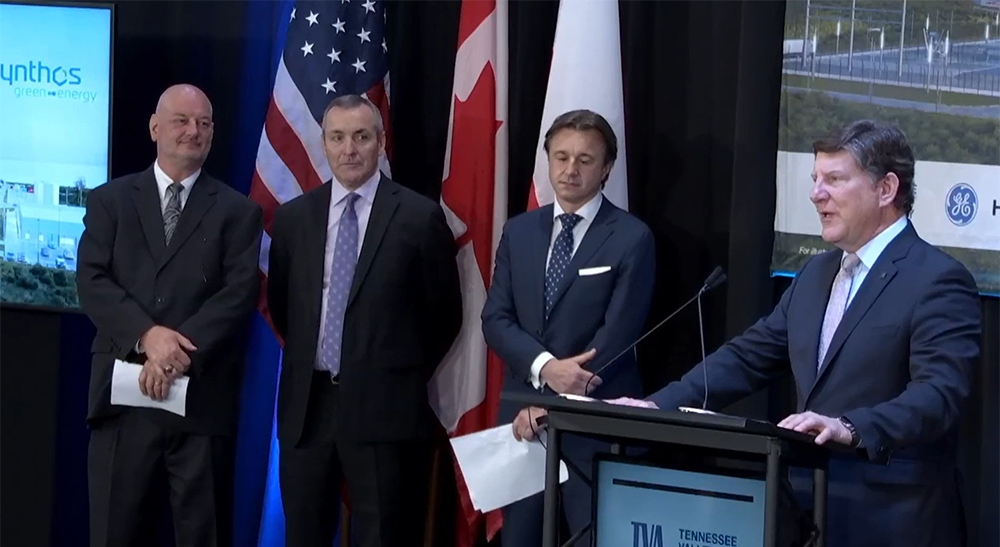State regulators, environmental groups and ratepayers urged FERC last week to control growing transmission costs by increasing oversight of “local” projects, limiting the use of formula rates and other measures. Transmission owners defended their spending and said FERC’s existing oversight processes under Order 890 are sufficient.
FERC solicited the stakeholders’ comments after it held a technical conference on containing transmission costs last October (AD22-8, AD21-15). (See Transmission Owners, RTOs Defend Planning, Cost Control Practices.)
The Illinois Commerce Commission and New Jersey Board of Public Utilities filed joint comments noting that both states have aggressive policies to decarbonize their power systems that will require significant transmission expansion. But that does not mean transmission should be built with little to no scrutiny, which the regulators said has been happening with “supplemental projects” in PJM.
Supplemental projects (called “asset management” projects under Order 890) represented 55% of the cost of transmission entering service from 2017 to 2021, ICC and BPU said. Spending on supplemental projects totaled $13.7 billion in that five-year period, compared to just $7.1 billion in the 19 years between 1998 and 2016.
“The need for new and stronger transmission, weighed against transmission’s rising costs, potential novel technological alternative solutions, and an inability to access underlying data, puts stakeholders — state commissions in particular — in a difficult situation with respect to assessing the efficiency and cost-effectiveness of proposed transmission plans,” the BPU and ICC said. “The majority of regional transmission owner stakeholders lack the resources and information necessary to make such determinations.”
An independent transmission monitor, as initially suggested in FERC’s advanced Notice of Proposed Rulemaking on transmission, could determine how well planning processes are working and determine whether local projects’ needs might be addressed more efficiently through a regionally planned project, the states said.
“We believe a regulatory gap exists,” the Ohio Public Utility Commission’s Federal Energy Advocate told FERC. “Too many transmission projects are not receiving sufficient regulatory scrutiny to ensure regulators and the public that, at least with regard to local (i.e., supplemental) projects, the regional transmission systems are being built in a cost-effective manner.”
States are hampered in overseeing such projects in PJM because even though they are limited to a specific zone, such zones often cross state lines — as do three of the four that make up Ohio. Even if the PUC stepped up its oversight, Ohio ratepayers would still be faced with costs allocated from projects that fall outside its jurisdiction, the advocate said.
The American Public Power Association also called for FERC to address locally planned projects.
“Among other potential problems, the magnitude of investment in locally planned projects suggests that transmission owners in some regions may be directing investment to such projects, with the result that potentially more efficient or cost-effective facilities are not considered,” APPA said.
But the problems vary by region and even between neighboring transmission owners so FERC should be flexible if it moves forward with any rule changes, the public power trade group said.
Advanced Energy United said local projects lead to fewer benefits than the major regional lines that are needed to help decarbonize the power system.
FERC “should aim to ensure more effective oversight of local transmission projects and more efficient regional and interregional transmission planning such that regional projects and/or non-wires alternatives and grid-enhancing technologies are selected over local projects when doing so would increase the benefits of transmission buildout while reducing total transmission costs,” said AEU.
More information sharing about such projects would help ensure that the money is being spent prudently and aid states in assessing such projects, AEU added. Setting up independent transmission monitors could help deal with the information asymmetry by providing independent analysis for all stakeholders, it said.
A joint filing of groups calling themselves the “Electricity Customer Alliance,” included several state consumer advocates from PJM, the Citizens Utility Board of Illinois, Electricity Consumers Resource Counsel, Public Citizen and the R Street Institute.
“Transmission developers have ample access to capital and spend over $20 billion per year on transmission in the United States,” the groups said. “Unfortunately, billions of dollars are misallocated annually, eroding net benefits to consumers and suppressing development of cleaner and lower-cost generation.”
FERC’s regional planning NOPR proposed pulling back on transmission competition by giving utilities the right of first refusal over transmission projects if they team up with another firm. But the groups said that would not bring their dollars out of the local process and into the regional planning process.
The Environmental Defense Fund, Natural Resources Defense Council, Sustainable FERC Project, Sierra Club and other environmental groups filed joint comments saying the current lack of oversight means FERC cannot ensure that transmission rates are just and reasonable.
“The current Order No. 890 requirements are insufficient to ensure a transparent process where stakeholders have a meaningful opportunity to examine system needs, evaluate public utility transmission providers’ proposed solutions, or propose potential solutions that can more effectively address these needs,” the groups said. “In practice, these requirements are treated like suggestions that are neither binding nor sufficiently detailed to elicit proper behavior from public utility transmission providers.”
Independent power producers NRG Energy (NYSE: NRG) and LS Power argued that while spending on transmission has been on the rise, it has not been for the major projects needed to transform the grid. In addition to developing generation, LS is active in competitive transmission development. NRG said the 5.5 million customers of its retail power business have seen their delivery charges rising in recent years.
“By removing the pass-through regulation that has come to characterize formula ratemaking in this field from its application to certain transmission rate base, the commission can return to the basic principles of sound utility regulation while achieving the public policy goals that animate much of its recent transmission rulemaking activities,” NRG and LS said.
They said FERC should put all projects at 100 kV and above into regional planning processes, a position LS Power has had for years.
Formula rates allow transmission owners to put new transmission investment into their ratebase with a presumption that it is just and reasonable. FERC could limit the type of lines that are put into formula rates to those that face competition, or additional regulatory oversight, or could even eliminate the practice altogether, NRG and LS said.
Utilities Say Local Spending is Justified
Formula rates are transparent and offer oversight, along with the benefits of administrative efficiency and allow for timely recovery of costs, said the Edison Electric Institute.
If any regulatory gaps exist, EEI said, the planning processes vary so much by region that FERC should not force universal fixes. Order 890’s rules for supplemental projects already offer sufficient transparency, it said.
The issue of smaller lines taking precedent has often come up in PJM, but Exelon told FERC there is good reason for the recent increase in spending in supplemental projects there.
“During the 2010s, PJM faced historically low load growth and had just experienced a build cycle of natural gas units, which had the effect of moving significant new, low-cost generation closer to load centers, reducing congestion,” Exelon said. “While these factors moderated the need for regional projects, during this period PJM identified, and PJM transmission owners developed, more than $20 billion in regional projects.”
Local projects needed investment in the same period as many lines reached the end of their useful lives and others needed maintenance, said Exelon (NASDAQ:EXC).
FERC should focus on the other changes it has considered — including the shift to forward-looking, scenario-based planning and first-ready/first-served queue processing — because the regulatory changes implied by its request for comments would amount to “experimentation” and might only delay needed investment in transmission, the company said.
American Electric Power (NASDAQ:AEP) agreed with Exelon that age is a major factor in rising transmission spending, saying 27% of its transformers and 10% of its circuit breakers are expected to exceed their life expectancy in the next 10 years.
“This reveals the simple fact that assets, some of which exceed 100 years old, have now reached the end of their useful life and need to be replaced to ensure the continuing reliability and resilience of the system,” AEP said.
AEP joined other transmission owners in questioning whether independent transmission monitors are needed, warning they could delay the transmission buildout without producing any real benefits.
The New York Transmission Owners do not want FERC to impose any national fixes because they could put a wrench in their efforts working with the state and others to implement the Climate Leadership and Community Protection Act that requires the state to have net zero emissions by mid-century. Because NYISO is in a single state, the local projects that have generated controversy in PJM are highly transparent there and regularly updated publicly with NYISO, the transmission owners said.
RTOs Weigh In
ISO-NE told FERC that its states have already asked for some reforms on “asset condition projects,” and its stakeholders should be allowed to work on that process.
Such projects are like PJM’s supplemental lines and generally fall under transmission owners’ responsibilities, but in New England projects above $5 million have to go the ISO’s Planning Advisory Committee.
PJM filed comments saying that FERC has found its supplemental transmission process provides enough transparency to stakeholders and reaffirmed that when the same rules were extended to end-of-life projects.
All stakeholders, including state regulators, can ask questions during its “Attachment M3” process for local planning.
“PJM currently has processes in place pursuant to which a PJM TO or incumbent developer constructing either a [regional] baseline project approved by the PJM Board of Managers or an Attachment M-3 Project provides reports to PJM, which allows PJM to track the project’s scope, schedule and any cost increases,” the RTO said.

